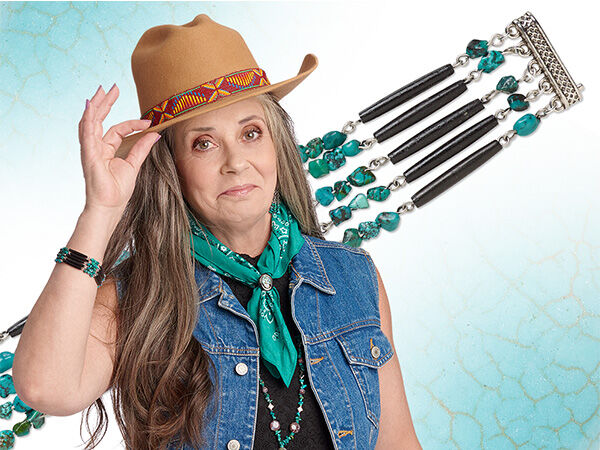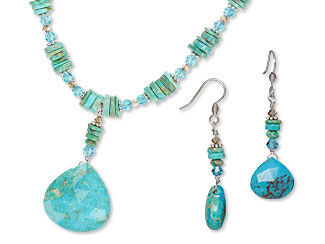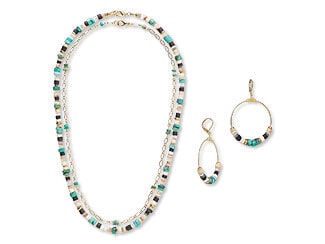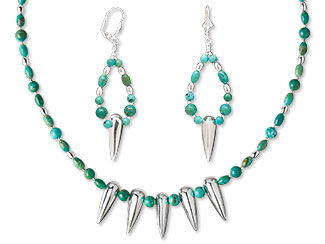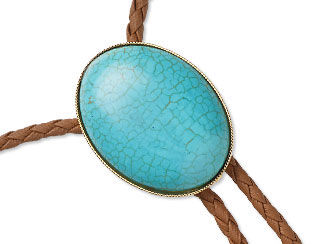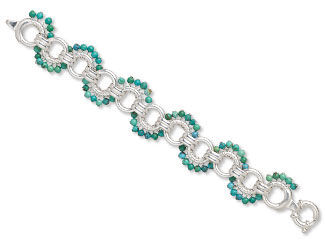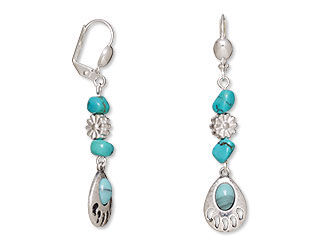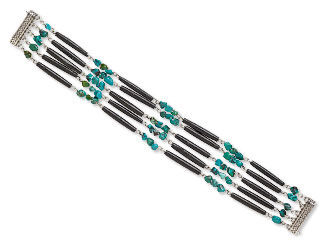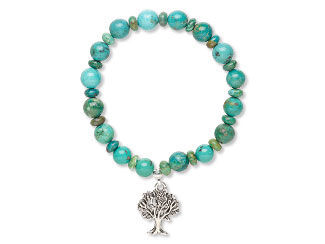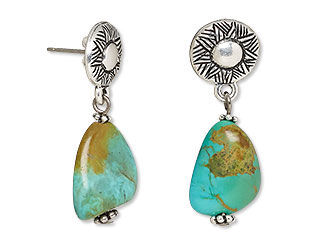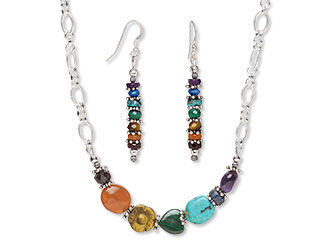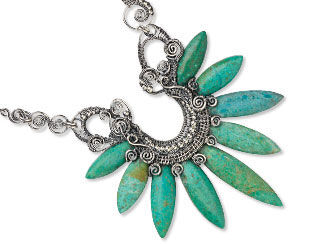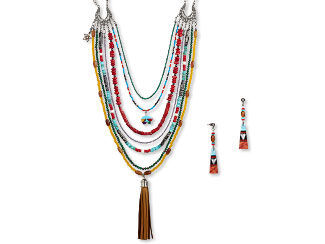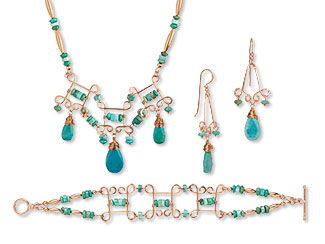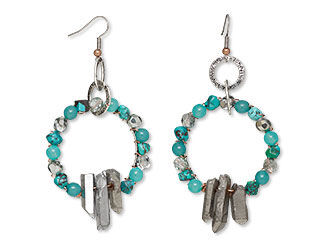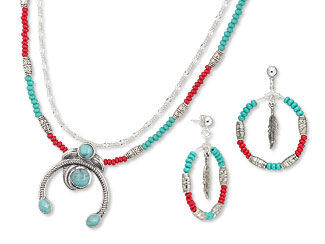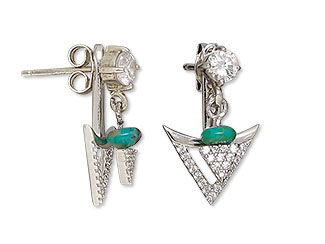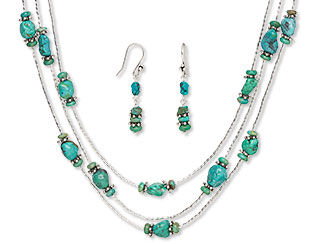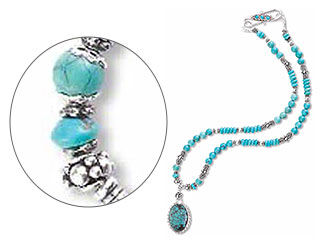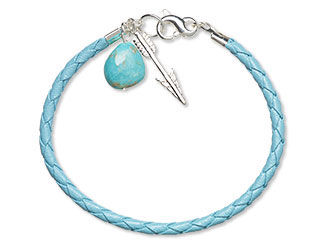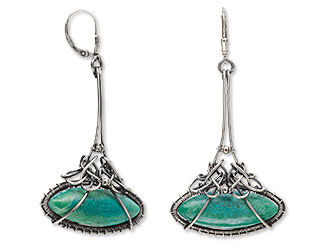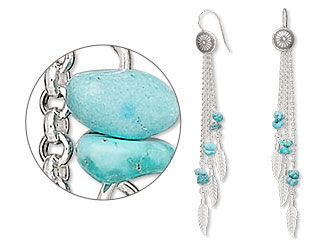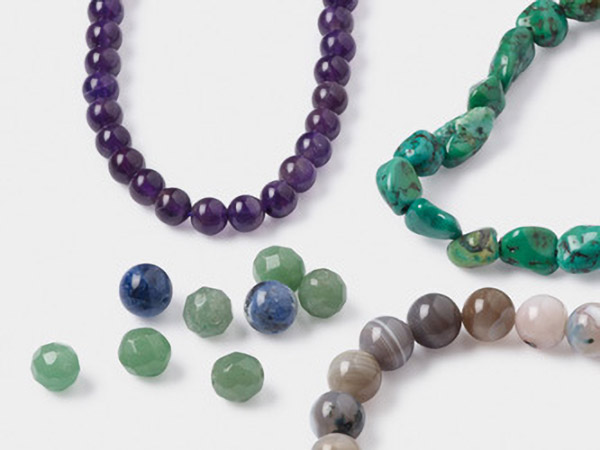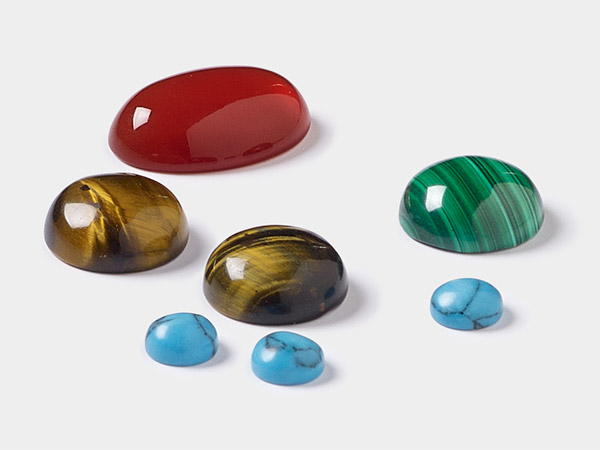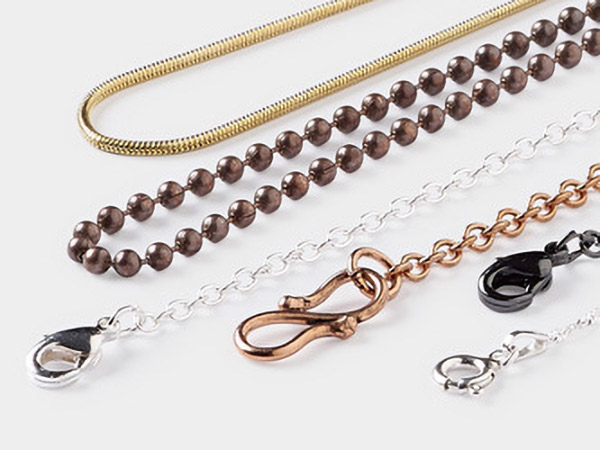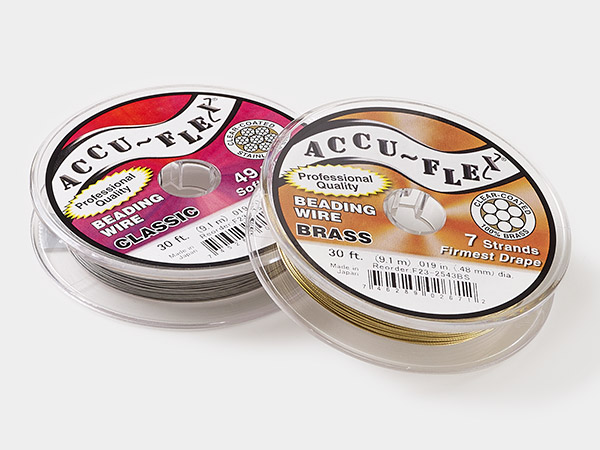Turquoise: Then and Now
Reputed to be one of the first gemstone materials used for ornamentation, turquoise holds a unique fascination that continues to captivate people to this day. What is it about this soft stone with a waxy luster that attracts us to it? For many, it's the eye-catching blue-green color that is both vibrant and soothing, often streaked with spidery black matrix lines. For others, it's the stone's perceived spiritual and metaphysical properties.
Let's take a closer look at this marvelous material.
Properties
What is turquoise?
This stone is a result of rain and ground water causing chemicals to seep out from rocks, forming deposits. These deposits hardened into the material we know as turquoise, varying in color from brilliant blue to deep green, depending on the minerals present. A high copper content produces the classic and highly sought-after blue color. Green tones are a result of iron. A yellow-green color indicates the presence of zinc.
The dark-brown, black or tan streaks and markings characteristic of much of the world's turquoise are caused by the surrounding rocks, usually limonite or sandstone. Limonite creates dark markings, while sandstone creates tan markings. The most prized turquoise among jewelry makers is a variety with little to no matrix, found only in the Sleeping Beauty Mine in Arizona.
Turquoise can change color due to absorption of water, oils (such as the oils on our hands) and other chemicals. The ancient Egyptians used wax on turquoise to help preserve it. Today, some turquoise material is given a special treatment called stabilization, often in the form of wax or plastic being applied to or introduced into the stone. This strengthens the stone and helps prevent it from discoloration.
The Zachery method improves natural turquoise, making it more resistant to discoloration and oil absorption and easier to polish. Because this method uses no artificial additives (plastic, resin, etc.), the treated material retains its gemological properties and is virtually indistinguishable from untreated turquoise above the microscopic level.
Throughout History
Turquoise first arrived in Europe in the 13th century.
In 17th century England, wearing turquoise jewelry was considered a sign of a well-dressed gentleman.
In 1810 Napoléon Bonaparte presented his Empress Marie Louise with a breathtaking crown of diamonds and turquoise as a wedding gift. While the crown originally contained emeralds, Napoléon arranged to have all 79 of them removed and replaced with turquoise before presenting it to his bride.
Turquoise is a popular choice for wedding rings in Russia and gifts for the 11th wedding anniversary.
It is the only gemstone with an official color named after it. Other gemstone-inspired colors have a modifier after them (amethyst purple, coral pink, jade green), whereas turquoise often stands on its own.
The name is thought to come from the French or German for "Turkish stone," or even the country of Turkey itself. 16th century Europeans mistakenly thought that Turkey was the source of the beautiful blue-green stones. However, much of the world's main sources of turquoise at the time actually came from Persian mines (modern-day Iran). The ancient Egyptians called turquoise mefkat, which also means "joy" and "delight."
Symbolism
Many cultures used and valued turquoise over the centuries. Turquoise beads have been found in ancient burial sites. Talismans, statuettes and other creations of exquisitely carved turquoise were made by Chinese craftsmen over 3,000 years ago. To the Aztecs, turquoise was considered more valuable than gold or emeralds. Turquoise is named among the stones decorating Aaron's breastplate in Exodus 28:15-21. And let's not forget the ancient Egyptians' love of turquoise. King Tutankhamun's famous death mask is inlaid with this vibrant gem.
Turquoise is thought by some Native American tribes to be the tears of the Creator or pieces of the sky. Apaches associated turquoise with rain at the end of the rainbow.
It is the birthstone for the month of December and is associated with the Throat Chakra, representing communication.
Turquoise is thought by some to be a stone of calmness, serenity, protection, wisdom, tranquility, good fortune and hope.
Popularity
Turquoise enjoyed immense popularity in the late 1960s and early 1970s, when American turquoise was plentiful. Celebrities like Jim Morrison and Steve Martin wore turquoise jewelry, adding to its mainstream appeal. Cher's use of Native American jewelry and accessories, including stunning squash-blossom necklaces, had a dramatic influence on fashion of the time.
Turquoise saw another popularity spike in the early 2000s with the boho movement that continues today. This stone is at home in several different styles and is especially trendy for spring and summer jewelry. It is equally stunning whether set in gold, silver, copper or rose gold, and simply smashing on its own or paired with coral, pearl or mother-of-pearl, black onyx and other gemstones. When polished into smooth cabochons, turquoise takes on an air of sophistication that can stand alongside diamonds, yet is still lowkey enough to dress up a pair of jeans. Nuggets and chips are popular for boho and nature-inspired jewelry and pair well with organic materials such as bone, horn, wood and rough gemstones.
Turquoise Jewelry: Get the Look
Stacking rings, bold statement rings with a Native American flair and eternity bands with alternating turquoise and diamonds are popular choices for jazzing up the hands. These can be worn solo, stacked or combined with other rings in complimentary designs—an arrow with a Native American-style turquoise cluster or flower, for example.
Necklace styles range from a single turquoise bead or link on fine chain (such as Gossamer™) to layered strings of beads mixed with metal beads and dainty charms, and neckwires coiled around turquoise cabochons. And don't forget the timeless simplicity of a pendant on a chain or a strand of beads, knotted or linked.
Bracelet styles are along the same lines as necklaces, with the additions of linked beads on gold or silver wire, and chain with letter or word links and turquoise bead drops.
Other bracelet styles include cuffs that showcase large turquoise cabochons or nuggets and chunky beaded bracelets bordered with leather cord or macramé. And don't forget that layered looks are also popular, so if you can't decide which of your terrific turquoise treasures to wear, stack them up.
Watches are coming back in fashion, and some even have turquoise faces! You could also create a custom band for your Apple Watch® with watch components, stringing material such as Accu-Flex® or FireLine®, leather cord or hemp and turquoise beads.
Earrings styles include simple studs, dainty drops, stunning chandeliers, bold statement earrings and hoops with half-drilled turquoise beads attached in back. You really can't go wrong by adding turquoise to any earring style!
Whether you value turquoise for its history, perceived powers and symbolism or its stunning beauty, you can find countless ways to incorporate it into your jewelry designs.
Shop for Your Materials Here:
**Please note that all metaphysical or healing properties listed are collected from various sources. This information is offered as a service and not meant to treat medical conditions. Fire Mountain Gems and Beads® does not guarantee the validity of any of these statements.
Have a question regarding this project? Email Customer Service.
Copyright Permissions
All works of authorship (articles, videos, tutorials and other creative works) are from the Fire Mountain Gems and Beads® Collection, and permission to copy is granted for non-commercial educational purposes only. All other reproduction requires written permission. For more information, please email copyrightpermission@firemtn.com.
